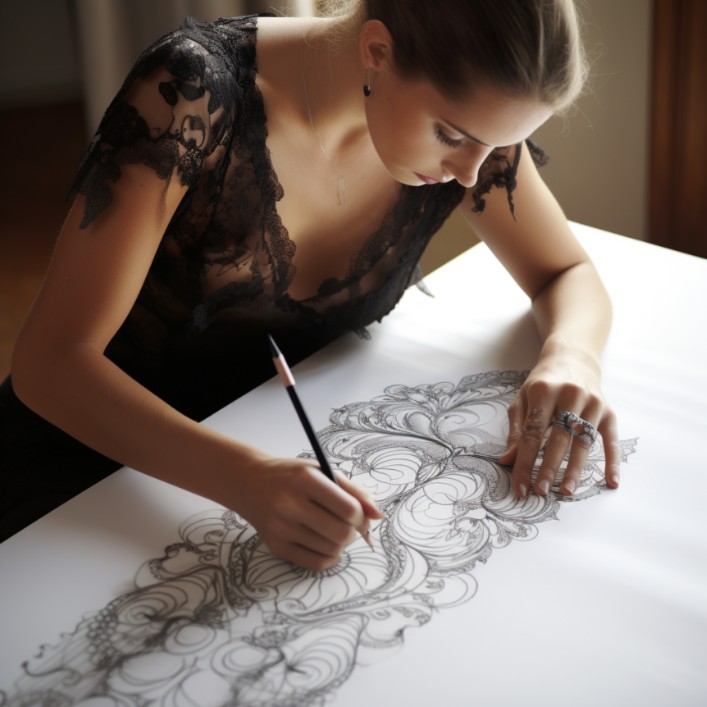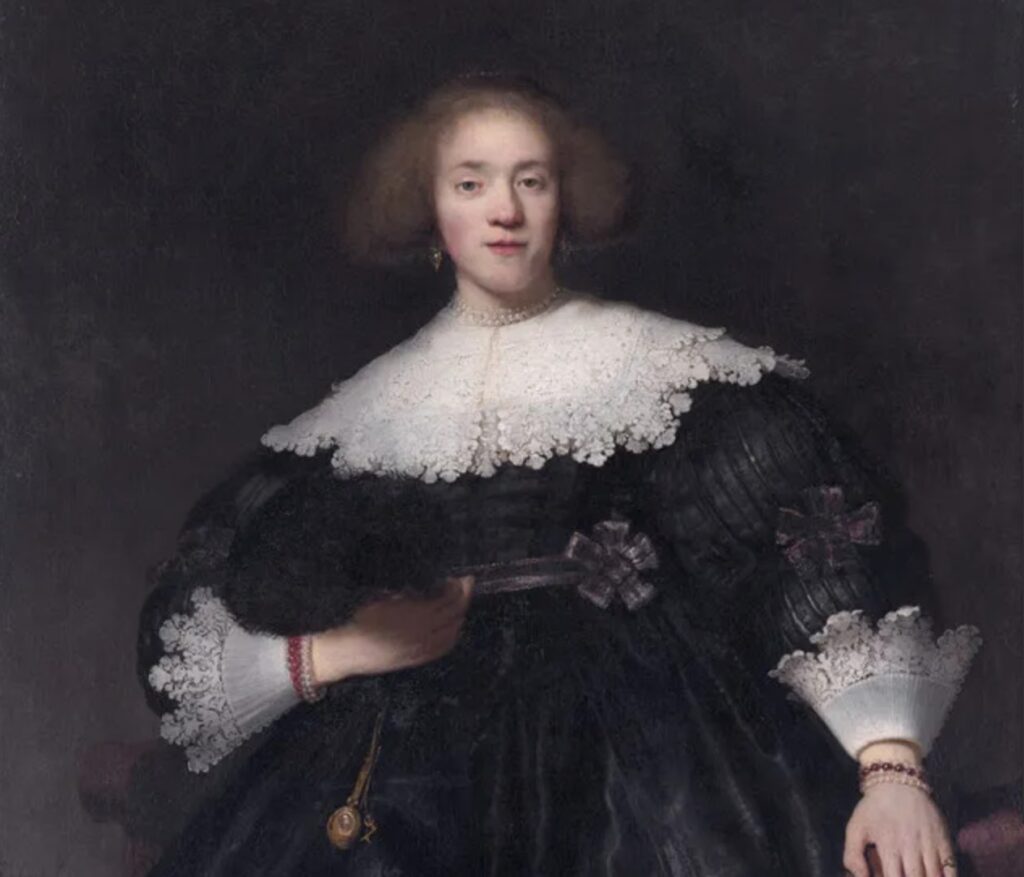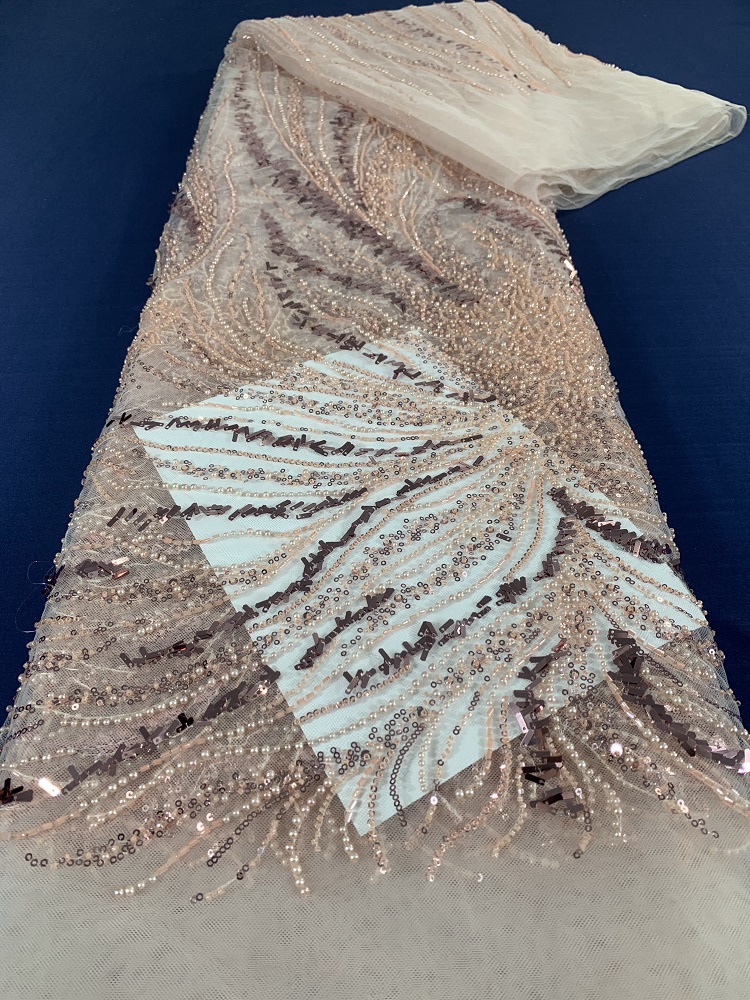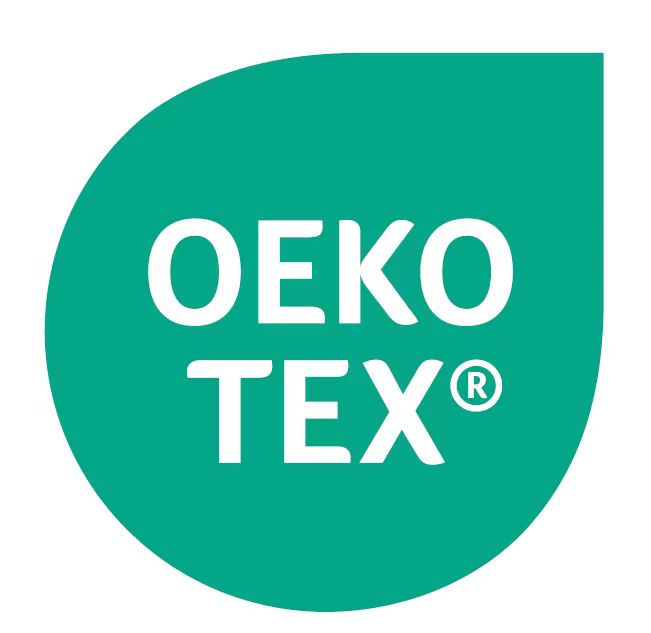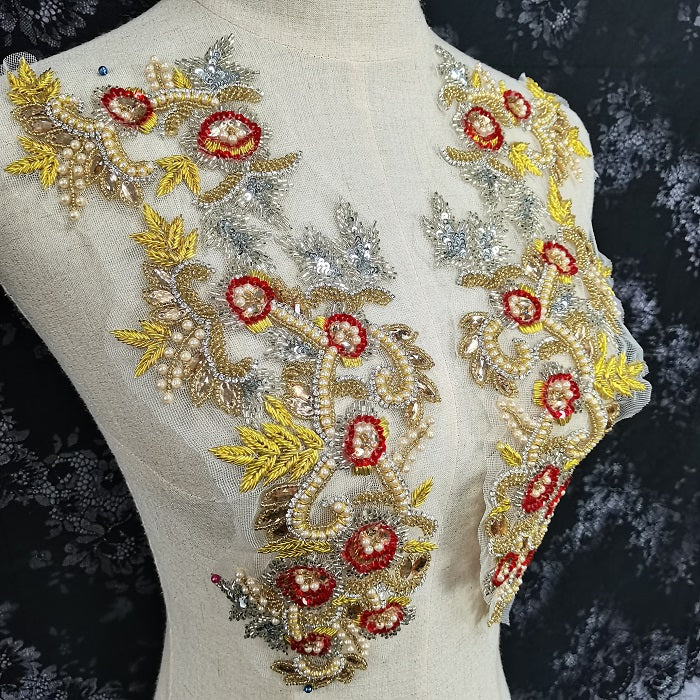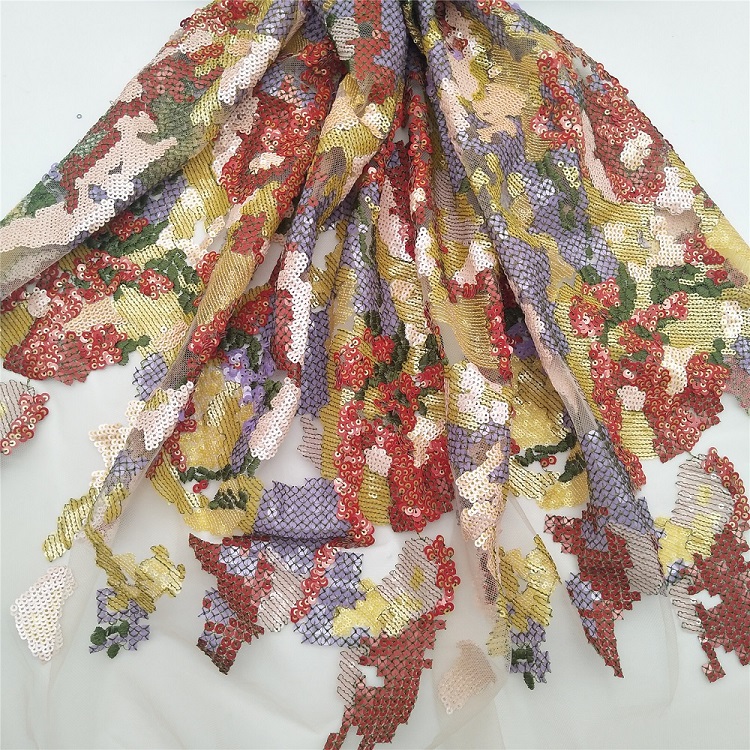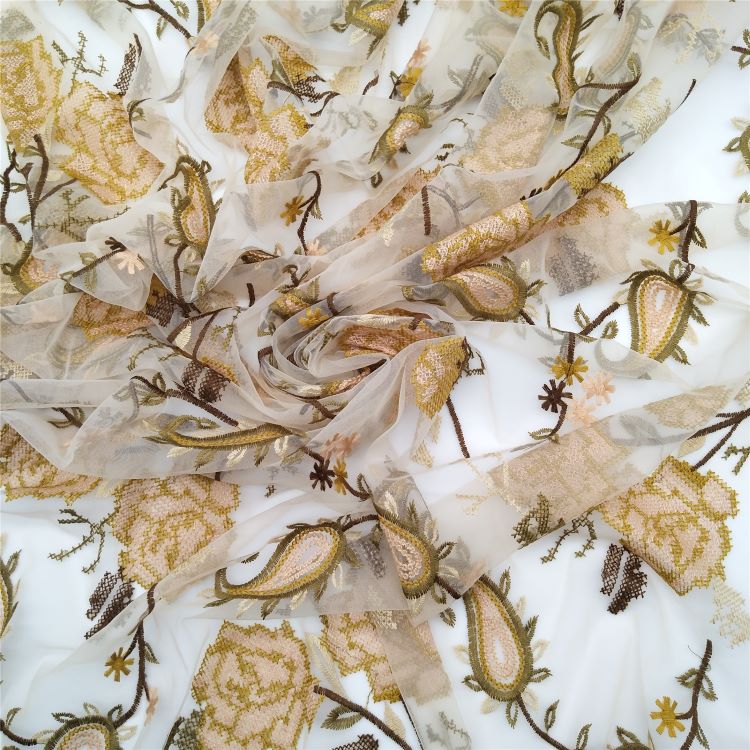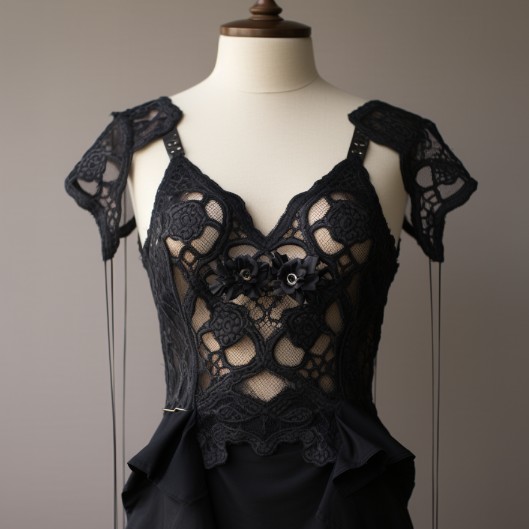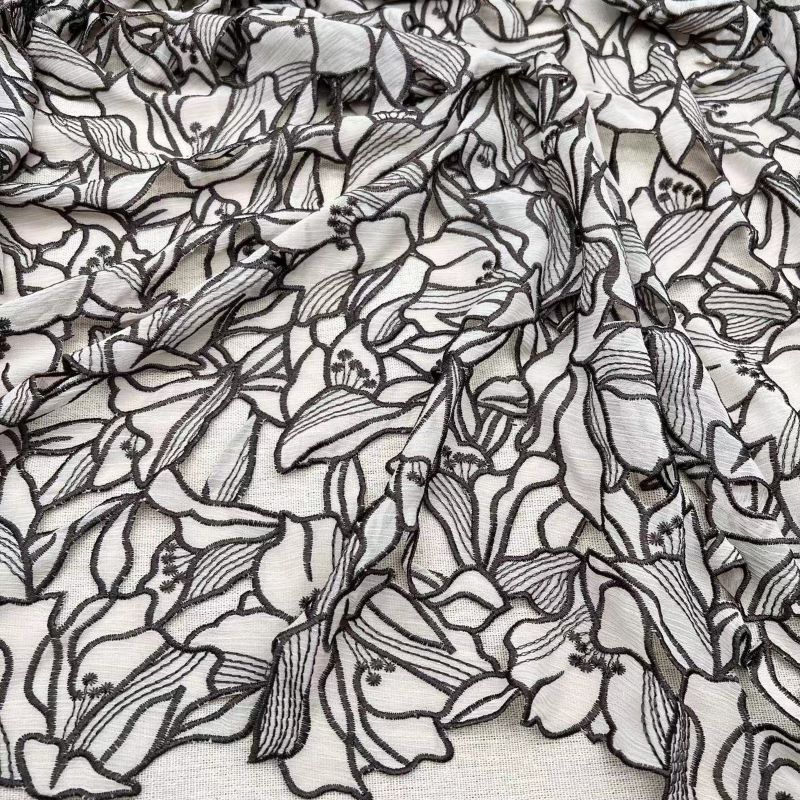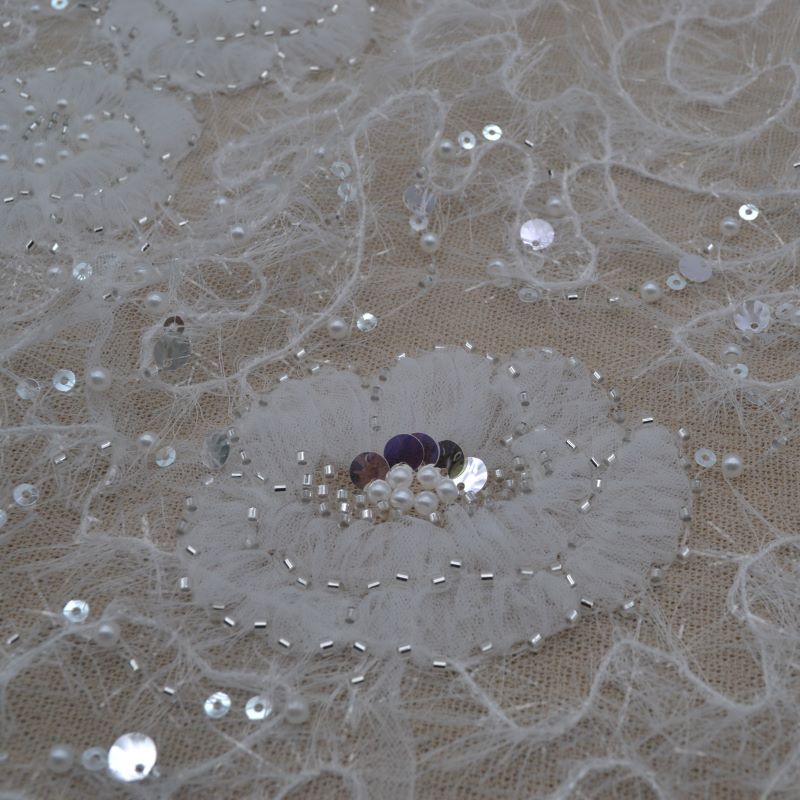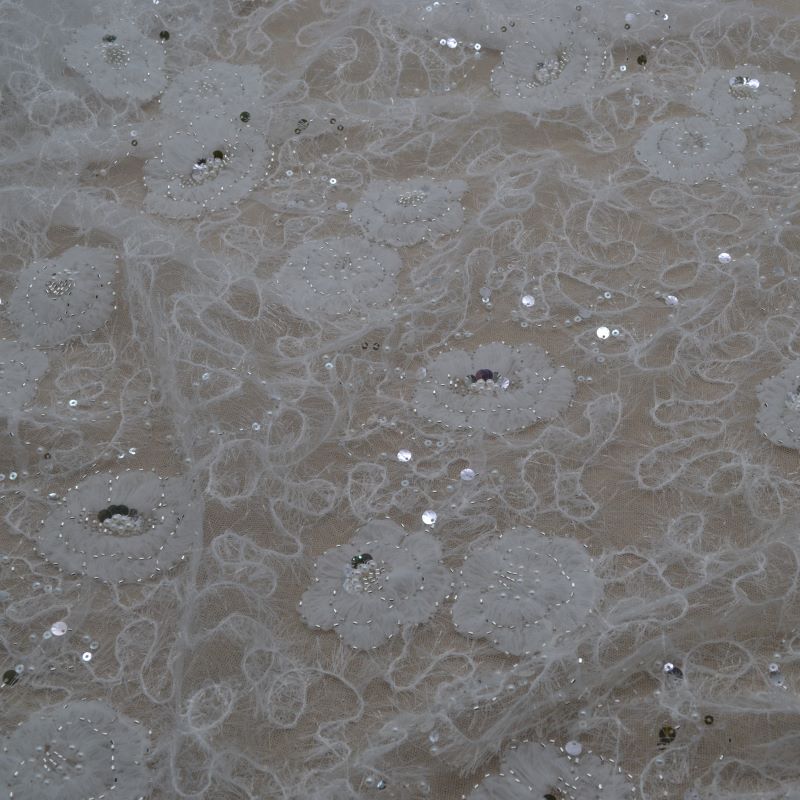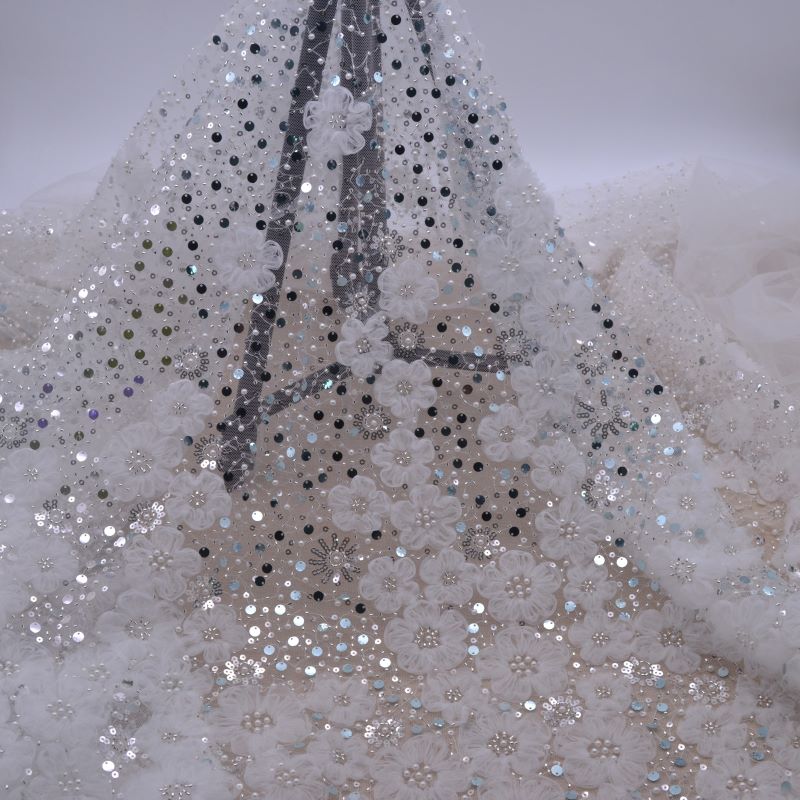The Story Behind the Gorgeousness of Lace
1、Introduction
A story of sophistication and innovation in modern lace design. Each thread tells a story of art, a design that blends tradition with modernity. Like poetry engraved in fabric, modern lace is a testament to timeless beauty redefined!
1.1 Overview of Lace Design
Lace design, an art form with roots reaching into history, embodies the delicate interplay of threads to create intricate patterns. This overview delves into the essence of lace, exploring its evolution, significance, and the timeless allure that makes it a canvas for artistic expression in the world of design.To design a lace, the first and foremost thing is to understand the scenario in which the lace will be used, in order to choose what kind of lace pattern can fulfill the requirements。
The following video is a hand-drawn draft of the lace design, based on the requirements of the garment design before designing
The process of designing lace in fashion
Dive into elegance with our lace-infused video showcase. Witness the delicate intertwining of threads, creating a mesmerizing dance of patterns and textures. Experience the allure of lace, where every stitch tells a story of timeless sophistication in fashion
1.2 Importance and Impact of Lace in Fashion
Lace, a textile crafted with precision and grace, has played a pivotal role in shaping the landscape of fashion through the ages. Its importance is not merely confined to its ornamental appeal but extends to its cultural significance, craftsmanship, and transformative impact on garments.
Capturing the essence of intricate beauty, our lace hand-drawn draft is a symphony of delicate lines. Every stroke tells a story, unveiling the timeless elegance and meticulous craftsmanship that defines our lace designs。Embarking on the canvas of creativity, our lace hand-drawn draft is a testament to artisanal precision. The meticulous detailing in each stroke reflects a dedication to preserving the artistry of traditional lace design. This draft serves as the foundation for our exquisite lace creations, allowing us to envision and refine the intricate patterns that will grace garments with a touch of sophistication.
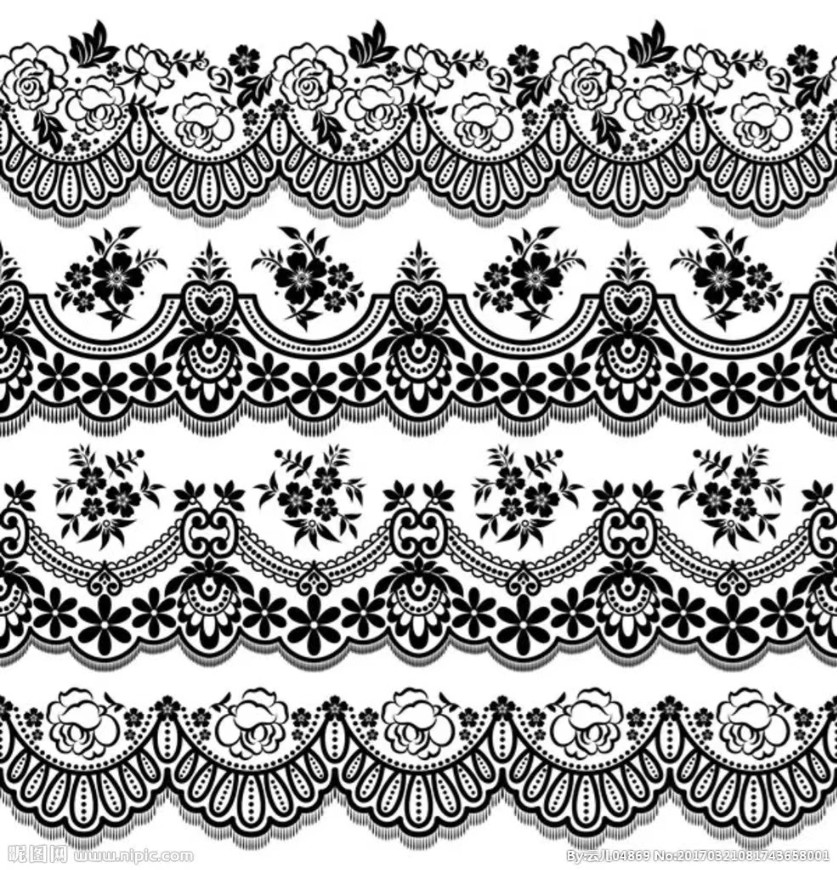
Lace, with its origins tracing back centuries, has been a symbol of opulence and refinement. From royal courts to the runways of modern fashion, it has adorned the attire of the elite and become synonymous with elegance. Its intricate patterns, delicately woven into fabric, add a touch of romanticism and allure that transcends time.
In the realm of fashion, lace has left an indelible mark, offering designers a versatile medium for creativity. Its impact is profound, seen in everything from haute couture to ready-to-wear collections. Lace has the power to elevate the simplest garment, turning it into a work of art. The intricate details of lacework often serve as a focal point, creating garments that are not just worn but celebrated.
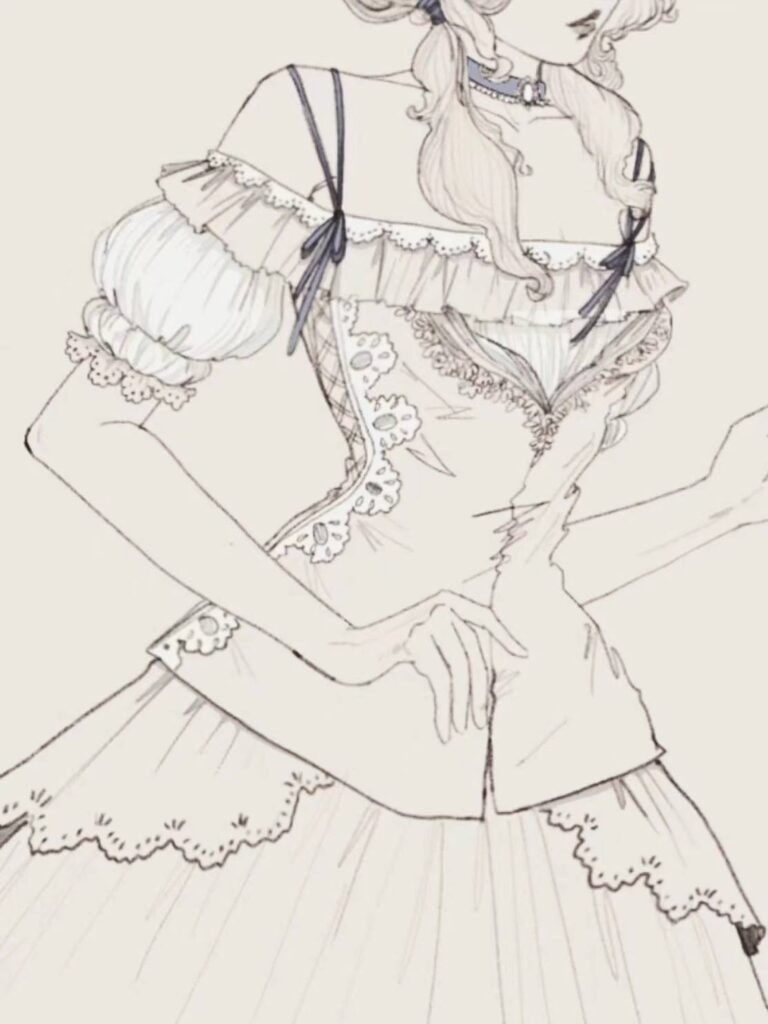
Experience the embodiment of exquisite craftsmanship in our lace design drawings for clothing. Each intricately detailed sketch serves as a blueprint, capturing the delicate patterns and unique charm destined to grace our garments. Witness the fusion of artistic vision and technical precision, as these drawings pave the way for the creation of timeless lace-adorned fashion pieces
Moreover, lace has the ability to evoke emotions and narratives. Whether used in bridal gowns, evening dresses, or everyday wear, it tells a story of sophistication and grace. The tactile quality of lace, combined with its visual appeal, creates a multisensory experience that resonates with fashion enthusiasts and connoisseurs alike.
Beyond aesthetics, the impact of lace extends to the global fashion economy. Lace production has become a craft that sustains livelihoods and preserves traditional artisanal skills. Regions with a rich history of lace-making contribute to the global fashion market, fostering cultural exchange and economic growth.
Dive into the enchanting realm of lace design, where every pattern defines a clothing style. From floral delicacy for ethereal dresses to bold geometry for modern flair, witness the artistry shaping diverse fashion expressions. Explore how each lace intricacy influences garment allure
In contemporary fashion, lace has undergone a renaissance. Designers experiment with new techniques, incorporating lace into unexpected places and styles. The juxtaposition of lace with modern materials and unconventional designs challenges conventional notions, pushing the boundaries of what lace can be.
In conclusion, the importance and impact of lace in fashion are multifaceted. It’s not merely a fabric; it’s a cultural artifact, a canvas for artistic expression, and a catalyst for economic growth. As we continue to embrace the allure of lace, we honor its rich history while eagerly anticipating the innovative ways designers will continue to weave it into the fabric of the fashion industry.
2、History of Lace
The history of lace is a rich tapestry woven with threads of artistry and tradition. Originating in the 15th century, lacemaking burgeoned across Europe, with Italy, Flanders, and France becoming epicenters of this delicate craft. Initially, lace adorned the garments of nobility, symbolizing status and wealth.
The Renaissance era witnessed the zenith of lace’s popularity, with intricate patterns gracing collars, cuffs, and accessories. The 17th century saw lace evolve into an integral part of fashion, with its popularity spreading across social classes. Lacework became a coveted skill, passed down through generations.
In the 19th century, industrialization revolutionized lace production, making it more accessible. However, handmade lace retained its allure, and the Arts and Crafts Movement embraced its craftsmanship. The 20th century saw lace adapting to changing fashion trends, from the Edwardian era’s opulence to the simplicity of the mid-century.
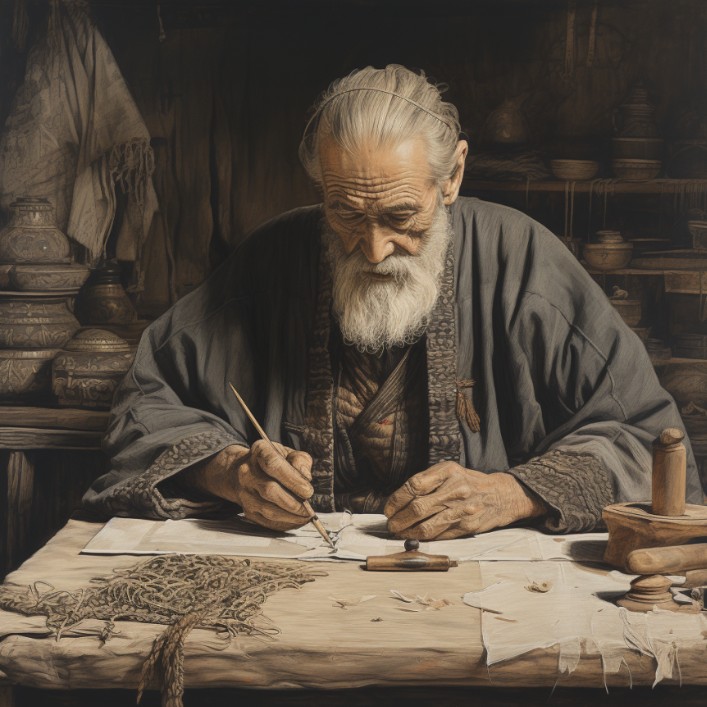
In the era of exclusively handmade lace, every design-to-production journey demands a substantial investment of energy, making lace a true emblem of status and prestige. The meticulous craftsmanship, intricacy, and dedication involved in creating each lace piece underscore its significance as a symbol of both artistry and social standing. The labor-intensive process, from conceptualizing a design to the final handcrafted masterpiece, reinforces the unique value of lace as a signifier of elevated status and refined taste.
Today, lace endures as a timeless embellishment, both handmade and machine-produced. Its history, a testament to human creativity, innovation, and the enduring allure of this intricate textile in the world of fashion and design.
2.1 Origins and Evolution
The origins of lace trace back to the late 15th century, emerging as a luxury craft in Italy, Flanders, and France. Initially reserved for the elite, lace adorned the attire of aristocrats and clergy, symbolizing wealth and prestige. The birth of needle lace in the 16th century marked a transformative moment, spreading rapidly across Europe and becoming synonymous with opulence.
In the early days, lace designs were opulent and strategically placed in the most conspicuous areas of attire, serving as unmistakable symbols of status and position. These exaggerated embellishments became an eloquent language of luxury, adorning the garments of aristocrats and clergy to visually signify their elevated social standing. The intricacy of lace not only reflected the wearer’s wealth but also underscored the craftsmanship associated with these exclusive pieces
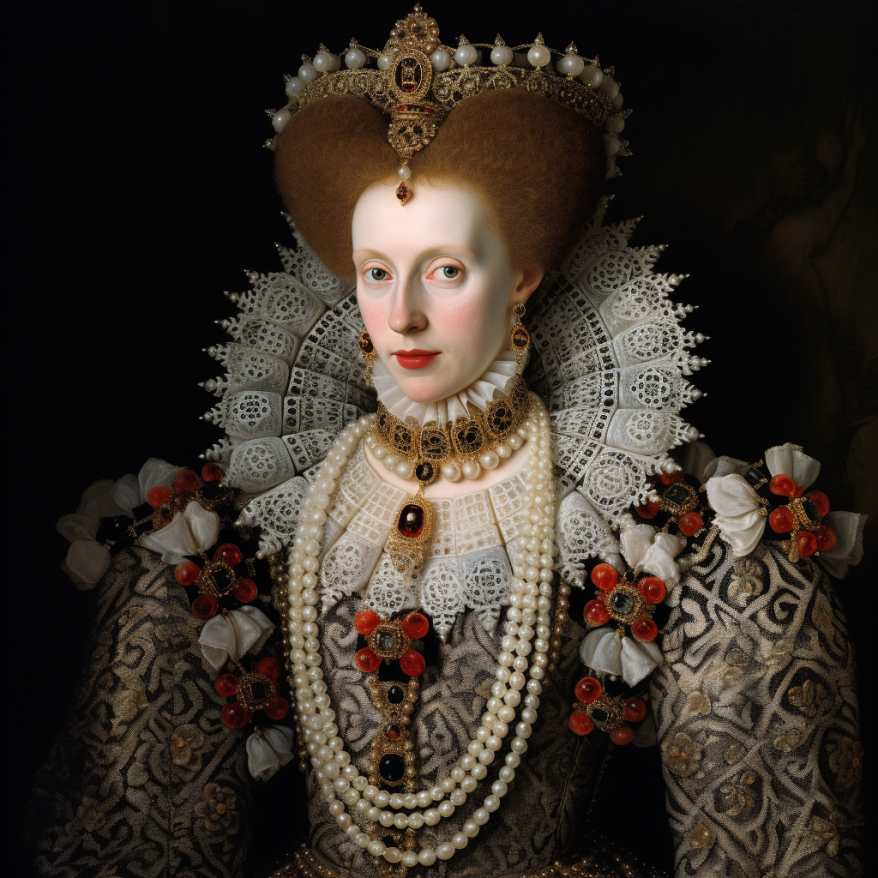
As lace-making techniques evolved, it found favor in the royal courts of Europe, gaining prominence during the Baroque period as an essential element of fashion. Elaborate lace collars, cuffs, and accessories became iconic, reflecting the extravagance of the era. The 19th century brought a dual evolution with the Industrial Revolution. Machine-made lace became more accessible, while handcrafted lace retained its allure, appealing to those who sought unique, artisanal pieces.
In response to industrialization, the Arts and Crafts Movement championed handmade lace, celebrating individuality and craftsmanship. Throughout the 20th century, lace adapted to changing fashion trends, from Edwardian opulence to mid-century simplicity. The 21st century witnesses a resurgence of appreciation for handmade lace, as designers and consumers recognize its artistry, uniqueness, and sustainability.
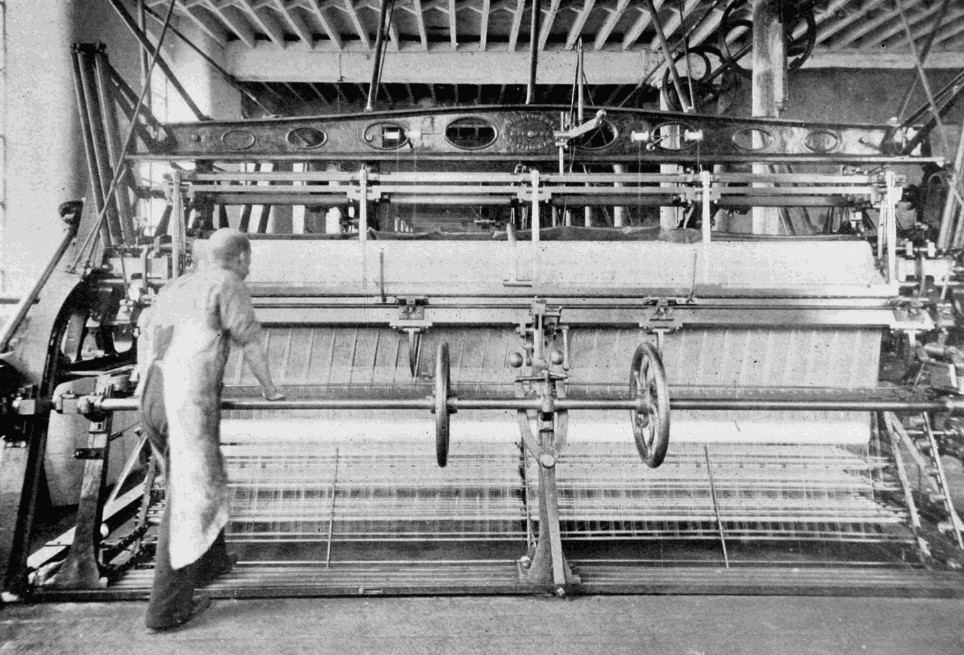
In the age of lace production innovation, designers balance aesthetics with machine intricacies. Beyond visual appeal, they navigate machine cycles and needle positions, aligning artistic vision with cutting-edge technology for efficient production.
Contemporary lace design is marked by a fusion of traditional techniques with modern aesthetics. No longer confined to traditional settings, lace finds itself in unexpected places, from casual wear to avant-garde fashion. The evolution of lace, captured in the accompanying table, reflects a journey of adaptability and enduring allure. From its humble beginnings as a symbol of aristocracy to its contemporary revival, lace remains a timeless expression of beauty and craftsmanship, weaving its delicate threads through the fabric of history.
Lace Evolution Table:
| Century | Key Developments |
|---|---|
| 15th | Emergence in Italy, Flanders, and France |
| 16th | Birth of Needle Lace; Royal Court Presence |
| 17th | Baroque Extravagance in Fashion |
| 19th | Impact of Industrial Revolution |
| 20th | Adaptation to Changing Fashion Trends |
| 21st | Resurgence of Handmade Lace; Modern Fusion |
2.2 Iconic Moments in Lace Fashion History
Lace, with its intricate patterns and delicate allure, has left an indelible mark on the tapestry of fashion throughout history. In the 16th century, the birth of needle lace in Italy marked a transformative era, as this delicate craft swiftly spread across Europe, becoming synonymous with Renaissance elegance. Queen Elizabeth I’s fondness for lace during the Elizabethan period elevated its status, with lace collars and cuffs becoming regal symbols of opulence.
White three-dimensional lace exaggerated design on the neckline and cuffs, the feeling that the display is not clothes, but to show people their own exquisite lace, in the expression of their status and identity, this is the design of the early lace is to follow the principle that a glance can be found wearing the lace, which is a representative of the fashion of the time!
The Baroque period witnessed lace’s ascendancy in French court fashion, where elaborate lace collars, known as “lawn,” became synonymous with aristocratic wealth. Louis XIV, the Sun King, further solidified lace’s position as a symbol of extravagance, influencing the fashion choices of French nobility. The Victorian era saw lace take on a new role, becoming an integral part of wedding fashion, symbolizing romance and timeless elegance. Lace’s association with delicate femininity permeated Victorian fashion, adorning dresses and accessories.
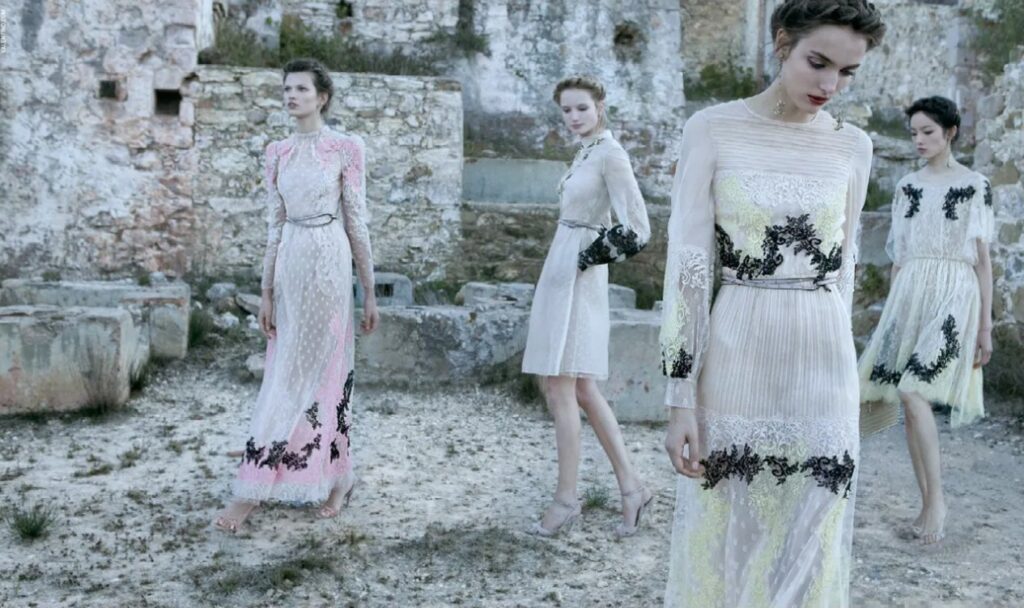
This artwork portrays the elegance of lace in the Baroque and Victorian periods. French court fashion, marked by “lawn” collars, symbolized wealth. In the Victorian era, lace became synonymous with romance in wedding fashion, adorning dresses and accessories. The painting encapsulates lace’s evolution as a symbol of luxury and romantic expression in fashion history
The 20th century brought about distinctive moments for lace, with the Roaring Twenties introducing lace into flapper fashion, embodying both rebellion and elegance. In Hollywood’s Golden Age, icons like Grace Kelly and Audrey Hepburn adorned themselves in lace, contributing to its association with glamour and sophistication.
Audrey Hepburn shines in a captivating gold lace ensemble, exuding timeless elegance. The intricate lace design enhances her iconic style, creating a mesmerizing and glamorous image.Lace design style from the original style of the original alone empty show, converted to clothing fabrics are fused, lace design has become more subtle,It’s a switch in design style
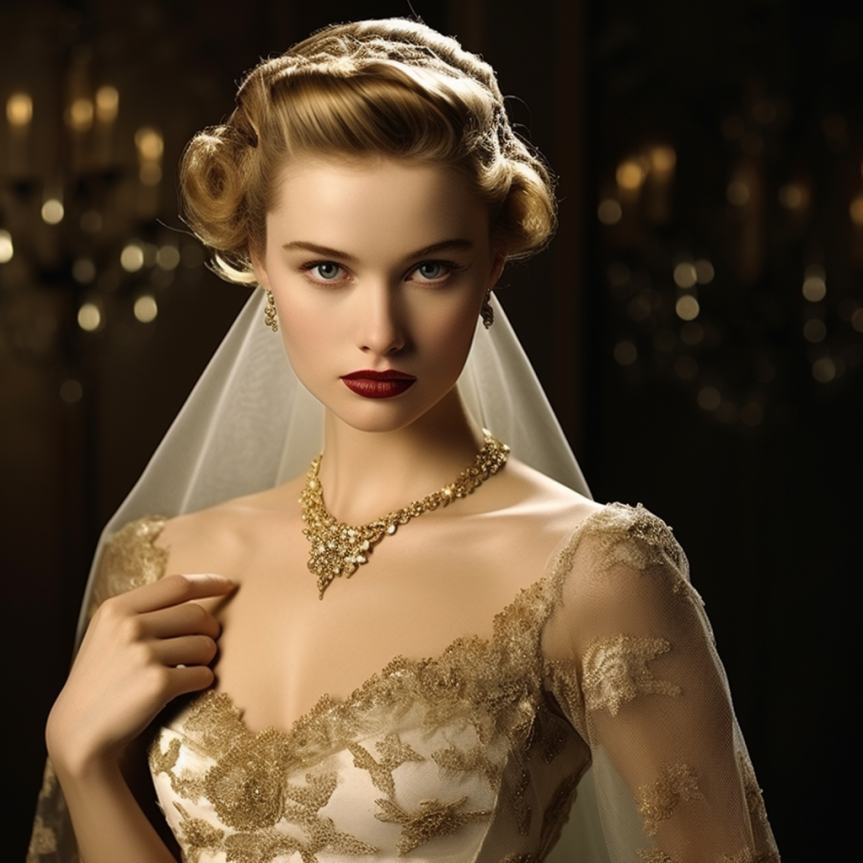
As we entered the 21st century, lace experienced a resurgence, blending traditional techniques with modern aesthetics. Designers redefined lace, pushing its boundaries beyond conventional uses. The contemporary era also witnessed a shift towards sustainable lace practices, reflecting a growing consciousness about environmental impact in the fashion industry.
In the grand narrative of fashion, these pivotal moments underscore lace’s enduring appeal. From its humble origins in Italy to its redefined presence in the modern era, lace remains a timeless symbol of beauty, elegance, and cultural significance.
3、Types of Lace Designs
3.1 Traditional Lace Designs Patterns
Lace, a timeless art form originating in the 15th century, has evolved into an embodiment of cultural heritage and sophisticated craftsmanship. Traditional lace designs patterns, born in Italy, Flanders, and France, are a testament to meticulous handcrafting that transforms threads into intricate works of art. Iconic patterns like needle lace, bobbin lace, and Chantilly lace showcase the versatility and elegance inherent in traditional lace.
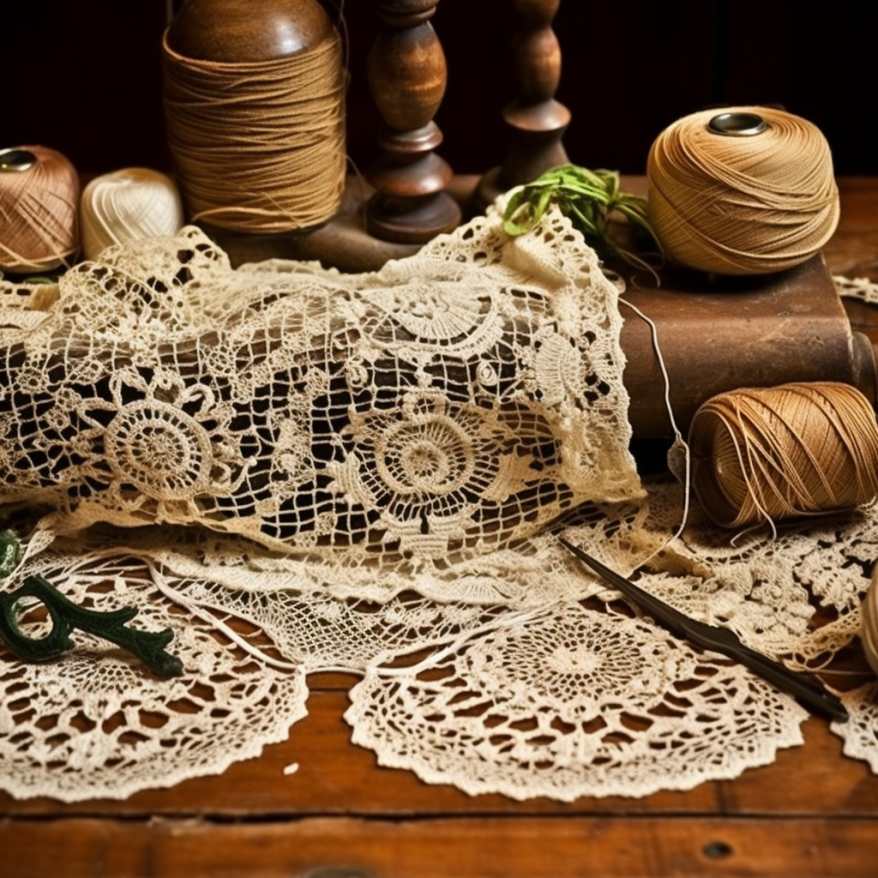
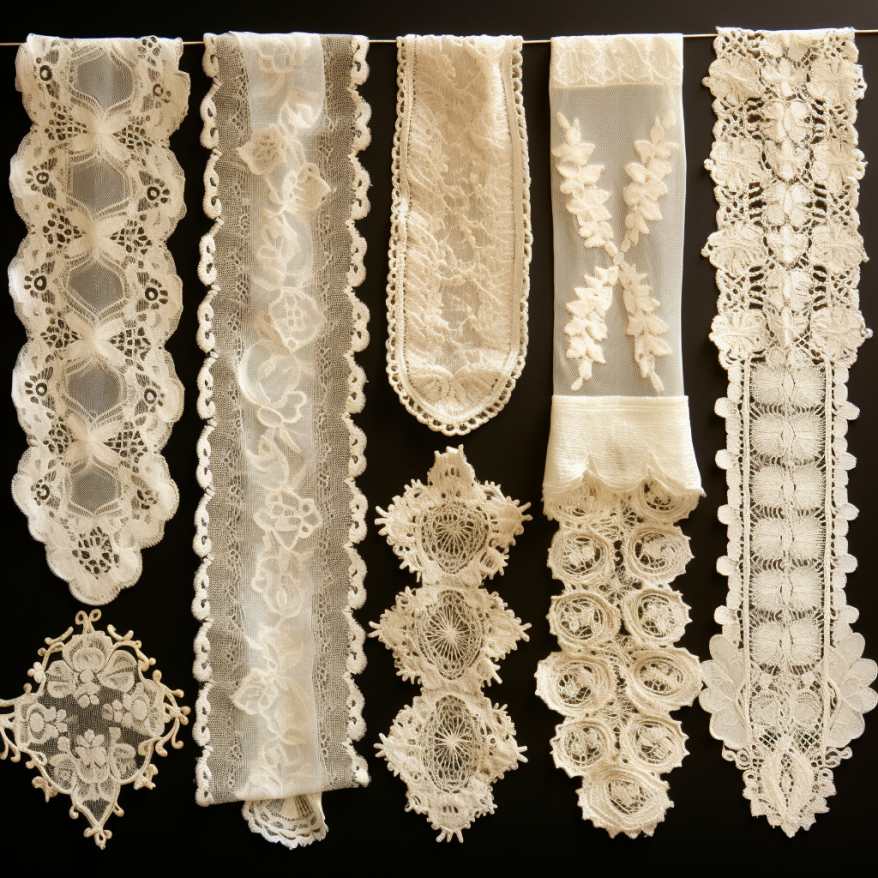
These patterns have left an indelible mark on global fashion, transcending borders and cultural boundaries. In Spain, the mantilla, a lace-trimmed veil, symbolizes religious ceremonies, while in China, guipure lace graces traditional garments, seamlessly blending heritage with modern style. Traditional lace, while rooted in history, continues to evolve, with contemporary designers reinterpreting patterns for modern aesthetics.
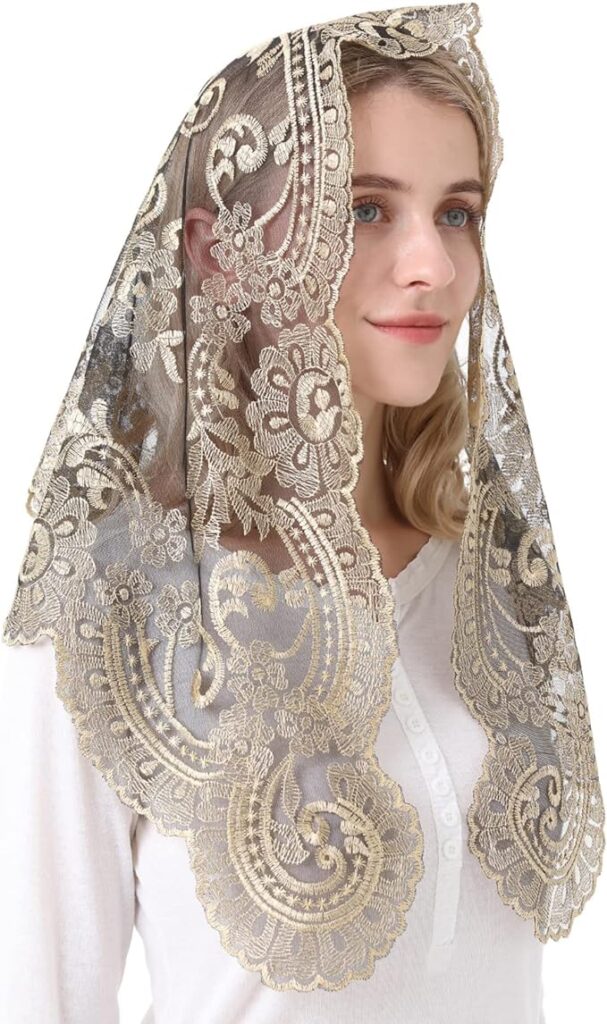
Spanish mantilla Catholic Veil Church Chapel Scarf Embroidery Lace Latin Mass
Despite challenges from industrialization, initiatives promoting sustainable practices and ethical production strive to preserve traditional lace-making techniques. The enduring allure of traditional lace lies not only in its aesthetic appeal but also in its ability to encapsulate stories of culture and craftsmanship. As we continue to admire and incorporate traditional lace into contemporary fashion, we celebrate a living legacy that connects us to a history of artistry and sophistication.
3.2 Modern and Innovative Lace Designs
In the tapestry of contemporary fashion, lace has undergone a metamorphosis, shedding its historical constraints to emerge as a canvas for modern and innovative designs. The evolution beyond tradition is palpable as designers push the boundaries, infusing lace with a 21st-century flair. Tradition and technology seamlessly intertwine, with designers leveraging computer-aided design and cutting-edge machinery to create lace that defies convention.
The process of designing a lace on a tablet by a Chinese lace designer can make lace design bolder, easier and more efficient, and quickly customize the lace design pattern demanded by the guest
The essence of modern lace lies in its fusion of unconventional materials and techniques. Plastics, metals, and recycled fibers join traditional threads, ushering in an era of sustainable and avant-garde lace. Laser cutting and 3D printing have become instrumental, offering precision and creativity that were once unimaginable. This departure from convention transforms lace into more than fabric; it becomes wearable art, a medium for conveying narratives and personal expression.
Golden threads cascade, forming elaborate patterns on the lace canvas. Beads glisten like dewdrops, enhancing the richness of the design. Machine precision dances with artistic flair, creating a tapestry of love for a truly enchanting wedding ensemble。This is machine-made design lace at 1/20th of the cost of hand-made lace.
The applications of modern lace are diverse, permeating various facets of the fashion world. From haute couture runways to everyday wear, lace has become a versatile means of self-expression. Bridal gowns, eveningwear, and casual attire alike are adorned with modern lace, blurring the lines of when and where lace is deemed appropriate. This adaptability speaks to the transformative power of lace in shaping contemporary aesthetics.
In the realm of fashion, lace serves as the exquisite tapestry that intertwines elegance with grace, elevating a garment to a level of timeless sophistication. From the crown to the hem, every delicate thread weaves a story of femininity, transcending mere fabric to become a symbol of refined allure. The intricacy of the lace design not only adorns the attire but also whispers tales of tradition, craftsmanship, and a meticulous attention to detail. It’s not just a decorative embellishment; it’s a declaration of style, a nod to the past, and a promise of enduring beauty. In this draft drawing, the lace design becomes the soul of the garment, infusing it with an ethereal charm that captivates the eye and resonates with the heart.
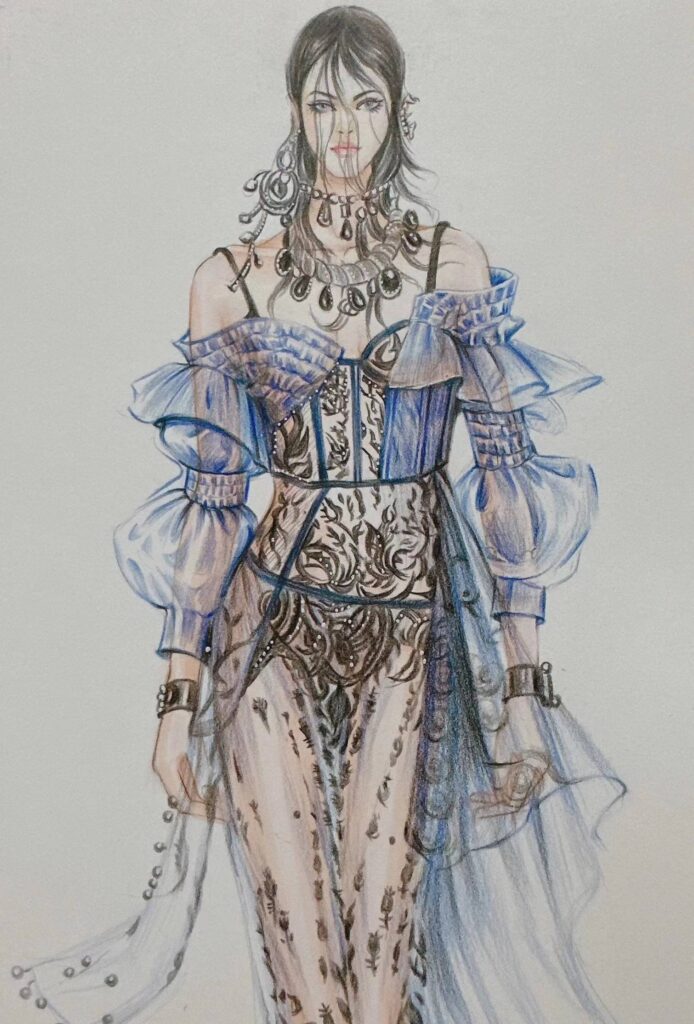
Sustainability emerges as a guiding principle in modern lace design, reflecting a heightened environmental consciousness. Designers increasingly embrace eco-friendly materials and ethical production processes, aligning fashion with a commitment to a greener future. Beyond its visual allure, modern lace designs embody a sense of responsibility towards the planet.
The influences shaping modern lace designs extend beyond geographical boundaries, drawing inspiration from a global tapestry of cultures and diversity. This cross-cultural exchange results in lace patterns that weave together elements from various traditions, creating a rich mosaic of designs that resonate on a global scale. The collaborative spirit extends further as designers join forces with technologists, artists, and scientists, ushering in a new era of interdisciplinary lace design.
As we navigate the dynamic landscape of modern lace, the future promises continued exploration. Technological advancements and shifting societal values will shape the trajectory of lace, opening new avenues for materials, sustainable practices, and artistic collaborations. The narrative of modern and innovative lace design is a testament to its adaptability and enduring allure in the ever-evolving panorama of fashion, inviting us to anticipate the unfolding chapters that will redefine this timeless art form.
4、Lace Design Techniques
4.1 Handcrafted Lace Design vs. Machine-Made Lace Design
The art of lace design unfolds through a delicate dance between handcrafted and machine-made approaches, each weaving its distinctive narrative into the intricate tapestry of fashion. Handcrafted lace design, guided by the hands of skilled artisans, is a labor-intensive symphony of craftsmanship. Meticulous manipulation of threads using traditional tools imparts a unique, individual touch to each creation, fostering a sense of exclusivity and embracing the imperfections that add character.
Watch mesmerizing video: Handcrafting braided lace, each strand tells a story of artisanal skill. Handmade designs unfold with rhythmic precision. The soundtrack? Echoes of a mallet meeting the ground, resonating craftsmanship and dedication. Pure sensory delight
In the realm of handcrafted lace, tradition and heritage intertwine seamlessly. Craftsmen employ age-old techniques like needle lace, bobbin lace, or tatting, preserving cultural richness in every thread. The time-intensive process, requiring hours or days for a single piece, elevates the perceived value of handcrafted lace, emphasizing the importance of tradition and artisanal expression.
Contrastingly, machine-made lace design introduces a realm of precision and reproducibility. Advanced machinery executes intricate patterns with consistent accuracy, meeting the demands of a fast-paced, consumer-driven market. Speed and efficiency characterize machine-made lace, allowing for mass production that caters to large audiences and diverse industries.
This video showcases a modern lace-making marvel. A high-speed symphony of precision as the machine effortlessly weaves intricate lace designs. Witness technology and creativity converge, crafting elegance at an extraordinary pace. Mesmerizing efficiency, where tradition meets cutting-edge.
The dichotomy extends to the accessibility and affordability of lace. Handcrafted lace, with its luxury associations, often serves niche markets. Its aesthetic appeal, emotional connection, and exclusivity contribute to its perceived value. In contrast, machine-made lace democratizes access, making this timeless art form a staple in various industries, from high fashion to everyday home decor.
The artistry embedded in these approaches highlights a dynamic interplay between tradition and innovation. Handcrafted lace embodies the expressive touch of artisans and serves as a homage to traditional craftsmanship. Meanwhile, machine-made lace reflects the precision of technology, meeting contemporary design sensibilities and embracing efficiency.
Both approaches adapt to design innovations, with handcrafted artisans pushing the boundaries of tradition, and machine-made lace benefiting from technological advancements. The world of lace design is a testament to the resilience and adaptability of a craft that has stood the test of time. As threads of tradition and technology intertwine, the intricate beauty of lace continues to captivate, telling a story that transcends generations and seamlessly blends the old and the new.
4.2 Embroidery and Appliqué in Lace Design
Embroidery and appliqué, nestled within the intricate world of lace design, form a mesmerizing tapestry of artistry. In the realm of lace, embroidery is a poetic dance of the needle, transforming threads into intricate patterns that range from timeless florals to elaborate scenes. Traditional techniques like satin stitch and chain stitch, passed down through generations, create a connection between contemporary creations and the rich legacy of craftsmanship. Contemporary lace designers infuse innovation into embroidery, experimenting with thread types, colors, and stitch variations, resulting in lace that narrates a modern story while honoring timeless traditions.
Experience the evolution of lace design! From intricate drawings to computerized magic, watch as embroidery breathes life into patterns. Precision meets artistry, as threads dance seamlessly on fabric. Witness the fusion of tradition and technology, crafting a tapestry of modern elegance
Complementing embroidery is the technique of appliqué, where pieces of fabric converge with lace to create a visual spectacle. Appliqué introduces a captivating interplay between textures and dimensions, allowing for the incorporation of diverse materials such as silk, velvet, or even unconventional elements like beads and sequins. This versatility opens avenues for contrasting textures, creating lace that goes beyond visual appeal to offer a tactile and sensory experience.
The marriage of embroidery and appliqué in lace design is a seamless union that contributes to the three-dimensional quality of lace, adding depth and intricacy. In this dynamic interplay, embroidered patterns may serve as backdrops for appliquéd elements, or vice versa, creating multi-layered lace that is rich in detail and visual complexity. These techniques become storytellers, weaving narratives through motifs inspired by nature, history, or contemporary influences.
Contemporary applications of embroidery and appliqué in lace design span diverse domains, from bridal couture to high-fashion runways, and from home decor to art installations. Bridal gowns, in particular, become canvases for intricate embroidery and appliqué, turning them into timeless heirlooms. Despite the allure of these techniques, challenges arise due to their time-intensive nature and the skill required, especially in the context of mass production. However, ongoing innovations, such as digital embroidery technologies, promise to overcome these challenges, opening new possibilities for intricate lace on a larger scale.
In conclusion, the artistry embedded in embroidery and appliqué within lace design captures the imagination and weaves stories that endure through generations. Whether rooted in tradition or exploring contemporary frontiers, lace adorned with these techniques stands as a testament to the delicate mastery of hands that transform thread and fabric into timeless masterpieces.
5、Lace Design in Couture Fashion
5.1 Lace Design Wedding Gowns: Timeless Elegance
Lace design wedding gowns epitomize timeless elegance, fusing tradition with modernity to create garments that transcend eras. Originating from centuries of intricate craftsmanship, lace found its place in bridal attire during the Renaissance, symbolizing purity, grace, and enduring love. The symbolism embedded in lace design wedding gowns adds a profound layer to the bridal experience, connecting brides to a legacy of artistry.
Step into the magical world of bridal! This video uncovers the design process of exquisite wedding lace. Exquisite details blossom as skillful hands slowly transform dreams into lace design drawings!
Craftsmanship plays a pivotal role, with artisans employing techniques like needle lace and delicate appliqué to transform each gown into a work of art. The versatility of lace allows for a myriad of styles, adapting to classic or contemporary tastes. Despite its traditional roots, designers continually infuse modern touches, ensuring lace design wedding gowns remain relevant and desirable.
The allure of lace details, from delicate sleeves to intricate bodice work, contributes to the gown’s narrative, creating a harmonious blend of modesty and sensuality. Cultural influences enrich lace design, with each cultural tradition adding a unique flavor to bridal couture. Sustainability is becoming a focal point, with designers exploring eco-friendly materials and ethical production processes.
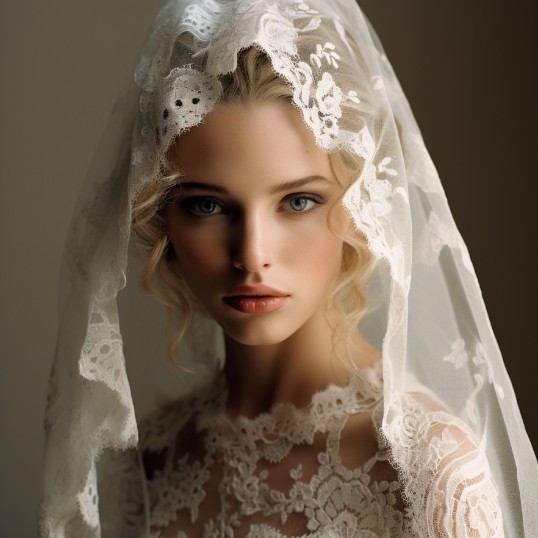
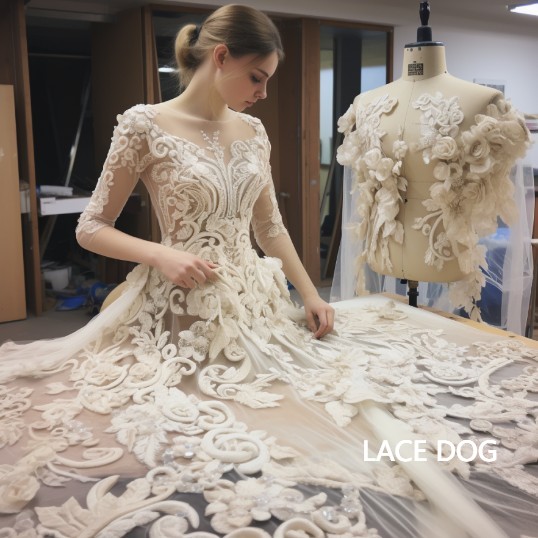
Wedding Lace Designs
Lace design wedding gowns have left an indelible mark in popular culture, gracing iconic weddings and making memorable appearances in films. However, what truly sustains their appeal is their ability to evoke emotion and create a connection between the bride and her gown. These gowns promise a journey down the aisle draped in the beauty of tradition, symbolizing everlasting love and grace. In the ever-evolving landscape of bridal fashion, lace design remains a choice that captures the timeless essence of matrimonial unions.
5.2 Lace Design in Red Carpet Fashion
Lace design plays a pivotal role in transforming red carpet fashion into a realm of unparalleled elegance and sophistication. The delicate intricacies of lace bring forth a timeless allure, creating garments that transcend mere attire and become iconic statements of style. The red carpet, a stage where glamour meets scrutiny, finds its perfect companion in the ethereal beauty of lace.
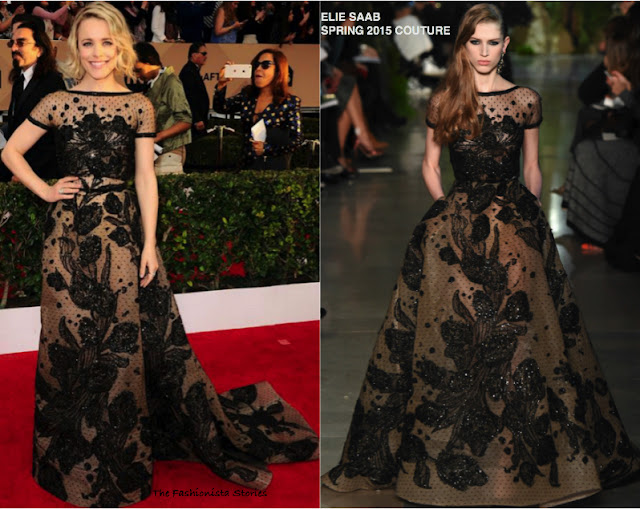
In this captivating red carpet snapshot, a black lace masterpiece takes center stage. The intricate and elegant lace patterns unfold like a poetic symphony, outlining graceful contours. The profound depth of black exudes mystery, while the meticulous craftsmanship of lace blossoms on every inch of fabric. This is not just an ensemble; it’s a solemn declaration of fashion, transforming the red carpet into a splendid art showcase.
When draped in lace, a gown takes on a romantic aura, its fabric whispering tales of tradition and craftsmanship. The interplay of lace patterns against the backdrop of the red carpet creates a visual symphony, captivating onlookers and leaving an indelible mark on fashion history. The meticulous artistry involved in lace design elevates garments to wearable masterpieces, each thread telling a story of dedication and skill.
One cannot underestimate the power of lace in red carpet fashion—it effortlessly merges the classic with the contemporary. Whether it’s a full lace gown or subtle lace accents, this textile has the ability to balance opulence and grace, making it a perennial favorite among designers and celebrities alike. Lace design introduces a touch of femininity, softening the often bold and avant-garde nature of red carpet fashion.
Beyond aesthetics, lace adds a layer of symbolism to red carpet ensembles. It embodies a celebration of tradition, a nod to the craftsmanship of bygone eras. In an industry that constantly seeks innovation, lace design stands as a timeless bridge connecting the roots of fashion to its ever-evolving present.
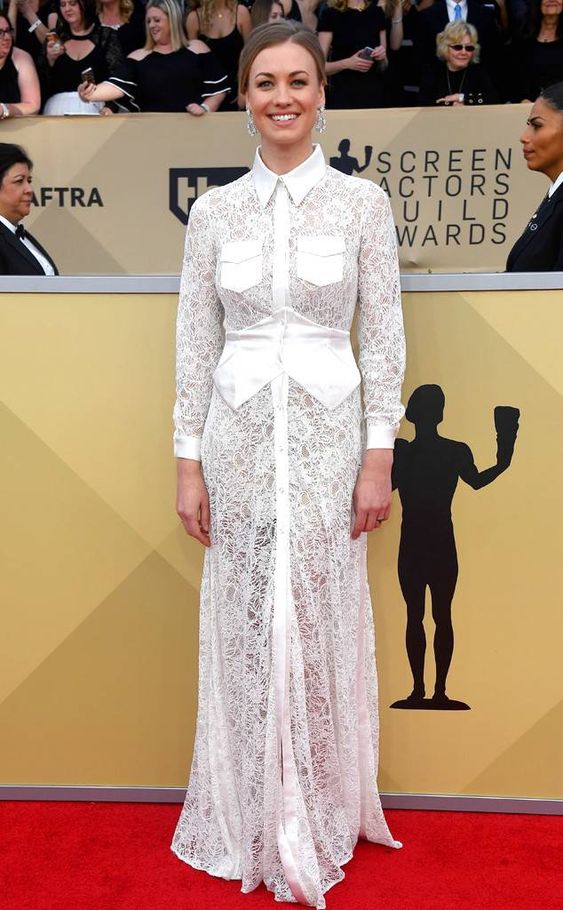
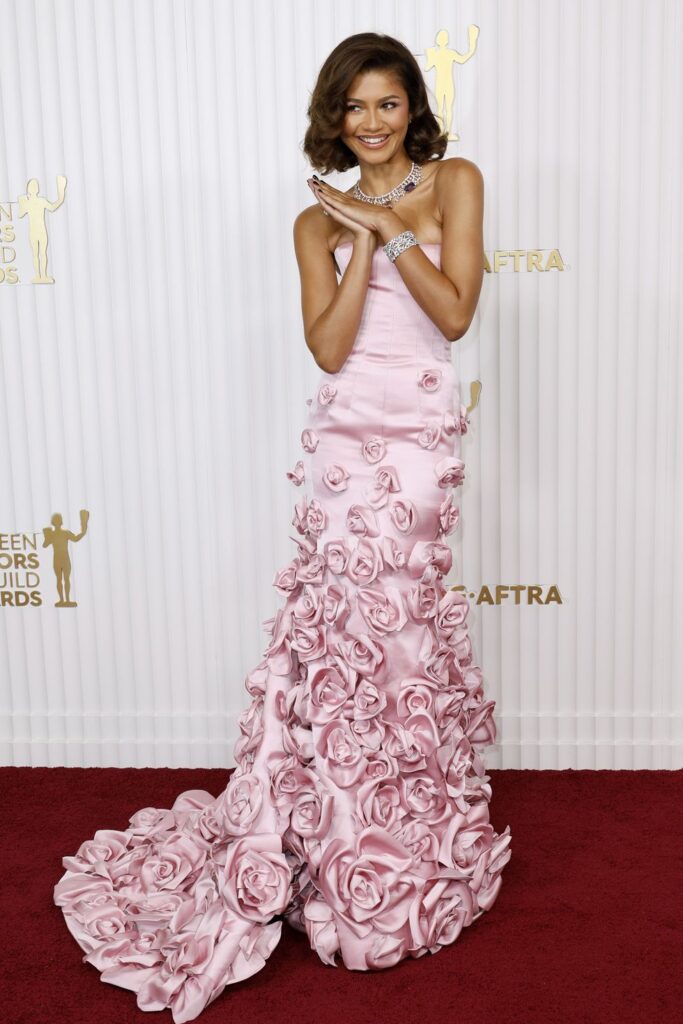
The versatility of lace is another facet that makes it indispensable on the red carpet. It seamlessly adapts to various styles, whether it’s vintage-inspired lace for a classic look or contemporary geometric patterns for a modern twist. This adaptability ensures that lace remains a relevant and enduring element in the dynamic landscape of red carpet fashion.
Moreover, lace designs often incorporate intricate details that demand attention. When worn on the red carpet, these details become focal points, sparking conversations and setting trends. The sheer craftsmanship involved in creating lace designs enhances the overall allure of red carpet fashion, turning every celebrity appearance into a visual spectacle.
A good dress with lace design, in addition to the material and flower production difficulties, is the sewing process, the symmetry of the left and right flower bit in sewing, cutting will not be able to batch cutting, all need to be a single piece of cutting, which requires the producer’s kung fu and patience, in the attention of millions of people on the red carpet fashion, is the test of the ability to control fashion!
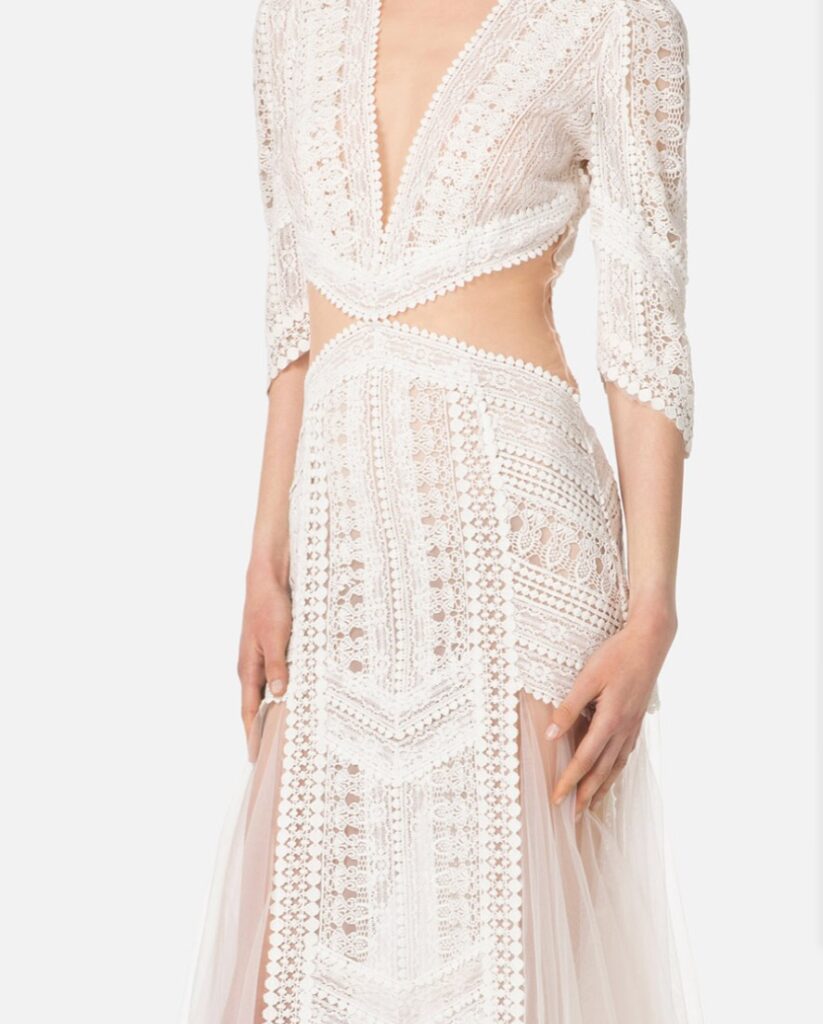
In conclusion, lace design is not merely a component of red carpet fashion; it is a transformative force that elevates the entire aesthetic experience. Its ability to blend tradition with modernity, softness with strength, and opulence with subtlety makes lace an indispensable element on the red carpet, ensuring that its influence remains enduring in the ever-evolving world of high-profile fashion.
6、Contemporary Trends in Lace Design
6.1 Fusion of Lace with Other Textiles
Contemporary trends in lace design showcase a dynamic fusion, seamlessly intertwining lace with diverse textiles. This innovative approach breathes new life into a traditional art form, pushing boundaries and redefining fashion aesthetics. The juxtaposition of lace with modern textiles creates a captivating synergy, merging the timeless allure of lace with the versatility of contemporary fabrics.
The combination of lace design and chiffon cloth, coupled with laser cutting, makes the original lightweight and plain chiffon cloth become a bestseller, laser cutting makes the original irregular carving holes become more simple, so that the lace design has more room to play!
Designers now experiment with pairing lace alongside unexpected materials, such as leather, silk, or even metallics. This avant-garde fusion introduces an element of edginess to lace, breaking away from its conventional associations. The result is a striking harmony between the delicacy of lace and the bold textures of other textiles, forging a unique visual narrative.
Moreover, the fusion extends beyond mere juxtaposition, with designers incorporating innovative techniques like laser cutting or 3D printing to enhance lace’s visual impact. This marriage of traditional craftsmanship and cutting-edge technology not only revitalizes lace but also propels it into the realm of futuristic sophistication.
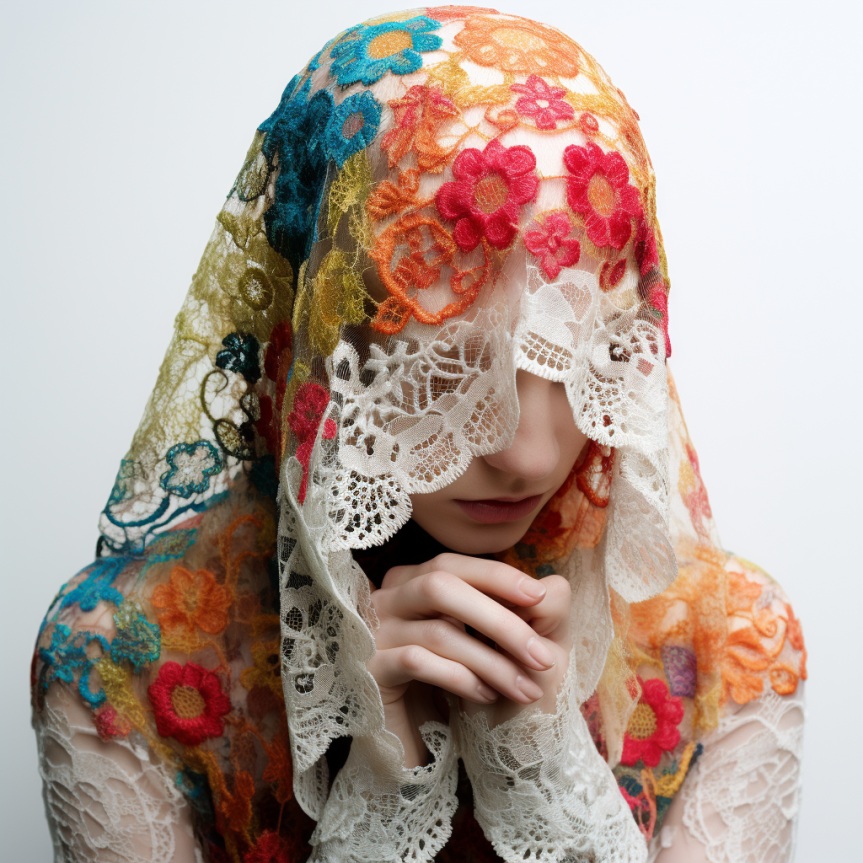
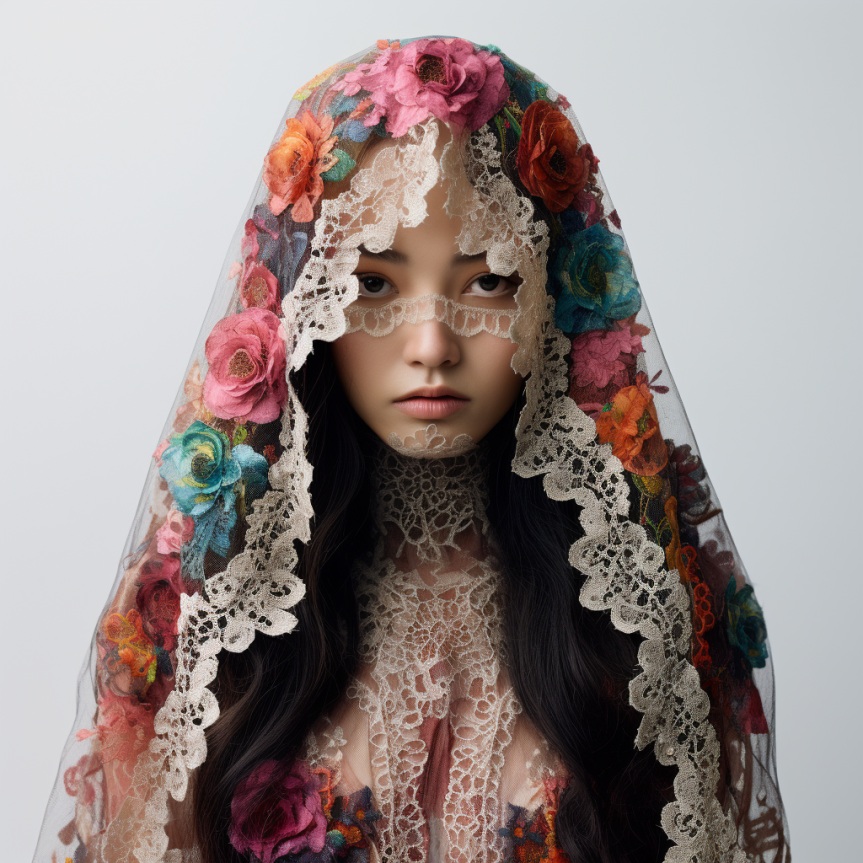
The trend also reflects a broader shift towards sustainability, as designers seek eco-friendly alternatives by combining lace with organic or recycled materials. This conscious fusion not only promotes ethical practices but also creates a narrative of responsible luxury, resonating with the environmentally conscious consumer.
In the realm of fashion, lace fused with unexpected textiles has made a notable impact on diverse silhouettes, from casual wear to haute couture. This versatility underscores lace’s ability to transcend its historical associations and seamlessly integrate with the ever-evolving landscape of contemporary fashion.

This is a lace design high-end dress, fabric design from the combination of modern and traditional, modern high-speed machine production of base fabric, and through the traditional hand to the small flowers according to the positioning of the sewing up, flowers symmetrical, 3D lace design to make this dress full of aristocratic spirit!
In essence, the contemporary fusion of lace with other textiles is a testament to the evolution of fashion, where tradition meets innovation, and where the boundaries of creativity are continually expanded. This trend not only breathes fresh air into lace design but also reflects the dynamic spirit of the fashion industry, where the past and present coalesce to shape the future of style.
6.2 Sustainable Lace Design Practices
Contemporary trends in lace design are navigating towards a sustainable future, both in terms of materials and independent design ethos. The demand for eco-friendly lace materials has led designers to explore organic cotton, recycled fibers, and ethically sourced threads. This shift towards sustainability not only aligns with the global movement for responsible fashion but also adds a layer of conscientious elegance to lace creations.
In the intimate setting, delicate lace adorns the lingerie, creating an ethereal allure. Intricate floral patterns intertwine with geometric elegance, forming a mesmerizing dance across sheer fabric. The lace delicately embraces the curves, enhancing sensuality. Soft scalloped edges add a touch of sophistication, casting a romantic and enchanting ambiance to the scene
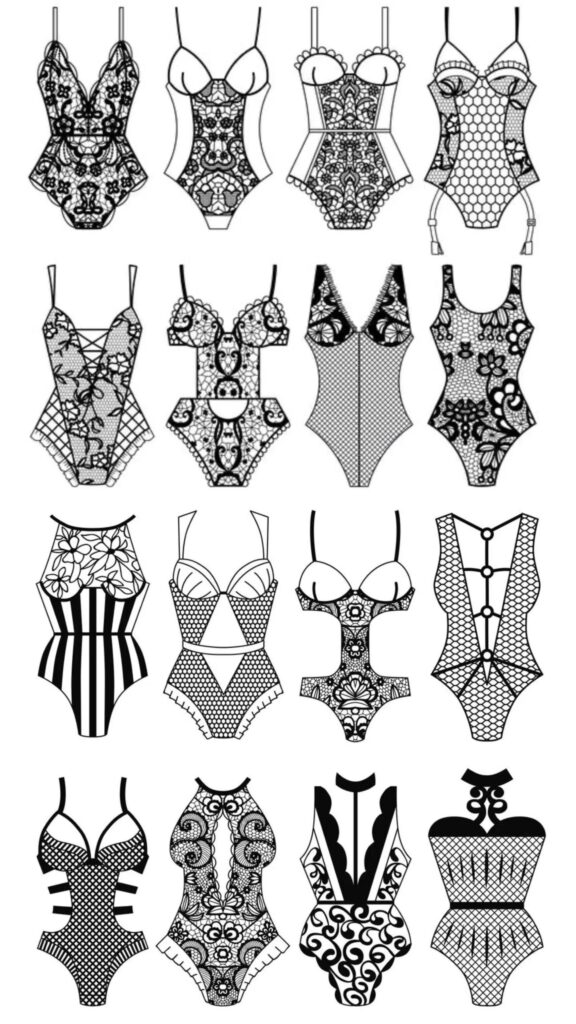
Moreover, the future of lace design embraces independence and individuality. Designers are increasingly emphasizing bespoke and unique lace patterns that reflect personal narratives. This move away from mass-produced designs allows for a more intimate connection between the wearer and the garment. Independent lace designers are gaining prominence, fostering a culture where each lace creation is a distinct expression of creativity and craftsmanship.
In this future-oriented approach, technology plays a pivotal role. Advancements in 3D printing and digital modeling are revolutionizing lace design, enabling intricate and customizable patterns that were once challenging to achieve manually. This blend of traditional craftsmanship with cutting-edge technology opens up new possibilities for intricate, personalized lace designs.
This lace design is inspired by the white willow flakes, and uses the 3D method of combining bead tubes, beading, and feather yarns to create a 3D lace design that realizes the whiteness and emptiness of the willow flakes in the garment.
Additionally, the future of lace design is marked by inclusivity. Designers are embracing diverse influences and cultural inspirations, creating lace patterns that celebrate a spectrum of styles and traditions. This inclusive approach not only enriches the visual language of lace but also contributes to a more global and interconnected fashion landscape.
As we step into the future, lace design is poised to become a symbol of sustainability, individuality, and cultural richness. The harmonious blend of eco-friendly practices, independent design ethos, and technological innovation propels lace into an exciting realm where tradition meets progress, creating a tapestry of endless possibilities.
7、The Creative Process Behind Lace Design
7.1 Inspiration and Conceptualization
The creative process behind lace design is a delicate dance of inspiration and conceptualization. It begins with a spark, a source of inspiration that ignites the designer’s imagination. This can stem from nature’s intricate patterns, architectural details, or even the emotions evoked by a particular era. As the designer delves into this wellspring of inspiration, ideas begin to crystallize.

A white customized gown adorned with exquisite lace, Lacemaker designers add rhinestones and bead tubes to their designs,featuring a captivating blend of floral motifs and geometric patterns. Enhanced with radiant rhinestones and bead tubes, the gown sparkles in the light, creating a dazzling effect. The lace gracefully accentuates the gown’s silhouette, adding a touch of glamour and sophistication to the overall allure
Conceptualization involves translating these inspirations into tangible design elements. Sketches and mood boards materialize, capturing the essence of the envisioned lace pattern. The designer considers the interplay of negative and positive space, the delicate balance of transparency, and the overall aesthetic that will define the lace.
Choosing the right materials is a crucial step in the process. Whether opting for traditional threads, modern fibers, or eco-friendly alternatives, the material selection influences the texture, drape, and overall feel of the lace. Experimentation with different yarns and techniques allows the designer to bring their vision to life.
The creative journey involves a constant interplay between intuition and technical expertise. Designers may experiment with various weaving techniques, embellishments, and even unconventional elements to achieve the desired effect. The process often demands meticulous attention to detail, as the intricate nature of lace requires precision in execution.
Collaboration also plays a vital role in the creative process. Designers may work closely with artisans, craftsmen, or even collaborate with technology experts for innovative approaches. The synergy between different creative minds enriches the design, resulting in a lace pattern that transcends individual perspectives.
Throughout this journey, the designer refines and iterates, allowing the lace design to evolve organically. The ebb and flow of the creative process often lead to unexpected discoveries and delightful surprises. Ultimately, the culmination of inspiration, conceptualization, material selection, and collaboration results in a unique lace design—a testament to the fusion of creativity and craftsmanship.
7.2 Sketching and Prototyping
Sketching and prototyping in lace design are pivotal stages where creative ideas take shape. Designers begin by sketching intricate lace patterns on paper, capturing the essence of their vision. These initial sketches serve as a blueprint, outlining the placement of delicate details and the overall composition.
Once satisfied with the sketches, designers move on to the prototyping phase. This involves translating 2D designs into tangible 3D samples. Using a variety of materials, designers create prototypes to test the feasibility of their lace patterns. This hands-on process allows them to evaluate how different threads, weaves, and textures interact, ensuring the intended aesthetic is achieved.
Experience elegance with our 3D chemical embroidery lace fabric. Inspired by white waves, it offers a unique blend of timeless design, comfort, and versatility. This transparent tulle textile is perfect for creating stunning garments, from bridal gowns to special occasion wear. The intricate 3D embroidery adds a luxurious touch, while the lightweight nature ensures comfort and drapability. Elevate your fashion creations with this creative and versatile lace material, showcasing a perfect balance of craftsmanship and aesthetic appeal.
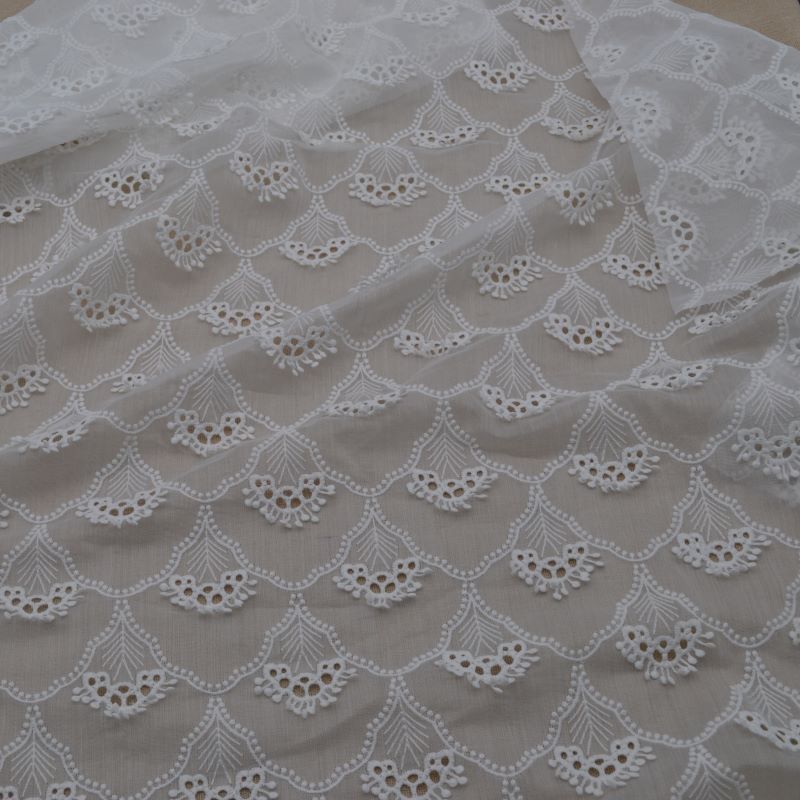
Prototyping also serves as an opportunity to make adjustments and refinements. Designers may experiment with thread thickness, spacing, and other elements to fine-tune the lace pattern. The tactile experience of working with prototypes provides valuable insights into the practical aspects of the design, ensuring that the final lace creation meets both artistic and functional standards.
Sketching and prototyping represent the bridge between conceptualization and execution in lace design, allowing designers to bring their visions to life and refine them through a tangible, iterative process.
7.3 Challenges in Lace Design and How to Overcome Them
Lace design, while enchanting, poses unique challenges that designers must navigate. The intricacies of lace require meticulous attention to detail, and achieving precision can be demanding. Maintaining a delicate balance between transparency and solidity poses another challenge. To overcome these hurdles, designers employ advanced technologies for precise execution and rely on expertise in traditional craftsmanship. Additionally, the choice of materials plays a crucial role; selecting the right threads and fabrics ensures the desired texture and durability. Adaptability is key, allowing designers to embrace challenges as opportunities for innovation and continuous refinement in the intricate world of lace design.
8、Conclusion
8.1 Recapitulation of the Beauty of Lace Design
In summary, lace design embodies a harmonious fusion of tradition and innovation. From the initial sparks of inspiration and meticulous sketching to the challenges faced during prototyping, each step contributes to the creation of a delicate masterpiece. The dance between creativity and craftsmanship, coupled with advancements in technology and material selection, brings forth lace designs that transcend time and trends. Despite the challenges, designers navigate the intricate world of lace, transforming challenges into opportunities for innovation. Ultimately, the beauty of lace design lies not only in its aesthetic allure but in the journey of creation itself, where each thread weaved tells a unique story of creativity, skill, and timeless elegance.
8.2 Inviting Readers to Share Their Lace Stories
Story 1:Lace and the Garden Surprise: Used lace scraps to tie up plants in the garden. Not only did it add a whimsical touch, but it also turned out that lace is an excellent support system for vines. Who knew fashion could be so practical in the garden?
Story 1:Lace and the Pet Fashion Show: Accidentally left a lace ribbon within reach of the cat. Woke up to find the feline proudly strutting around with the lace as a makeshift collar. Turned into an impromptu pet fashion show!
Story 3:Grandma’s Lace Legacy: My grandma’s lace collection is like a treasure trove. She once used a lace doily as a makeshift coaster for her coffee, only to discover it was a rare piece from the ’60s. Now, we treat it like royalty every tea time!
Let’s all share funny stories about lace !…… ……
FQAs:
1. Q: What is lace design?
- A: Lace design is a delicate and intricate craft that involves creating patterns using threads or fabric. It often employs techniques like embroidery, appliqué, or weaving to produce decorative openwork patterns.
2. Q: How to make a great lace design?
- A: The greatest lace design according to the customer’s personal to design, from the design draft, production of raw materials, cutting, sewing this several processes, each of which requires time to polish, when the work out of the Hou, that will be the most dazzling moment.
3. Q: How is handcrafted lace different from machine-made lace?
- A: Handcrafted lace involves manual creation by skilled artisans, adding a personal touch and uniqueness. Machine-made lace is produced using automated processes for efficiency and consistency.
4. Q: What are some traditional lace design techniques?
- A: Traditional techniques include needle lace, bobbin lace, tatting, and crochet. These methods have been passed down through generations and are often rooted in cultural heritage.
5. Q: How has technology influenced lace design?
- A: Technology has introduced innovations like computer-aided design (CAD), laser cutting, and 3D printing, revolutionizing lace design processes and allowing for more intricate and precise patterns.
6. Q: What is the significance of lace in fashion?
- A: Lace in fashion adds a touch of elegance and sophistication. It’s used in various garments, especially in bridal wear, evening gowns, and lingerie, enhancing the overall aesthetic.
7. Q: Can lace be sustainable?
- A: Yes, sustainable practices in lace design include using eco-friendly materials, ethical production methods, and promoting longevity in design to reduce environmental impact.
8. Q: How is lace used in interior design?
- A: Lace is employed in curtains, tablecloths, and other home decor items to add a delicate and decorative touch. It allows light to filter through, creating an airy and elegant ambiance.
9. Q: What is the history of lace design?
- A: Lace has a rich history dating back to the 15th century. It originated as a luxury craft in Italy and Flanders, evolving over time into a globally appreciated form of artistic expression.
10. Q: Can lace be incorporated into modern, casual clothing?
- A: Absolutely. Modern lace designs are versatile and can be integrated into casual clothing such as tops, dresses, or even accessories, adding a touch of femininity and style.
11. Q: Are there different types of lace patterns?
- A: Yes, numerous lace patterns exist, ranging from floral motifs to geometric designs. Common types include Chantilly lace, guipure lace, and Venetian lace, each with distinct characteristics.
12. Q: How do designers combine different lace techniques in a single piece?
- A: Designers often marry techniques like embroidery and appliqué, creating multi-layered lace with depth and intricacy. The combination allows for a unique and visually complex result.
13. Q: Is lace design only for formal occasions?
- A: No, lace can be used in both formal and casual settings. Its versatility allows for incorporation into everyday clothing, making it accessible for various occasions.
14. Q: Can lace be dyed to different colors?
- A: Yes, lace can be dyed to a variety of colors, offering flexibility in design. However, the choice of material may influence the dyeing process and outcome.
15. Q: How is lace preserved and cared for?
- A: Lace should be stored flat or rolled to prevent stretching or distortion. Gentle handwashing with mild detergent is recommended, and it should be air-dried or laid flat to maintain its shape.
16. Q: What are the challenges in mass-producing handcrafted lace?
- A: Mass production of handcrafted lace faces challenges due to the time-intensive nature and the need for skilled artisans. Innovations such as digital technologies are being explored to address these challenges.
17. Q: Can lace be used in contemporary art installations?
- A: Absolutely. Artists often incorporate lace into contemporary installations, exploring its symbolism and creating visually captivating exhibits that blend tradition with modernity.
18. Q: How has the perception of lace design changed over time?
- A: Lace design has evolved from a luxury reserved for the elite to a widely appreciated form of artistic expression. It is now seen as both traditional and contemporary, adapting to changing tastes.
19. Q: Can lace design be a form of cultural expression?
- A: Yes, lace often reflects cultural heritage. Different regions have distinct lace-making traditions, and artisans incorporate cultural motifs and symbols into their designs.
20. Q: Are there lace design competitions or exhibitions?
- A: Yes, there are lace design competitions and exhibitions globally. These events showcase the creativity and skill of lace designers, fostering innovation and appreciation for the craft.

